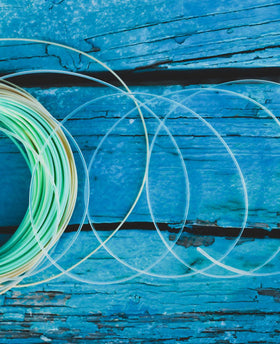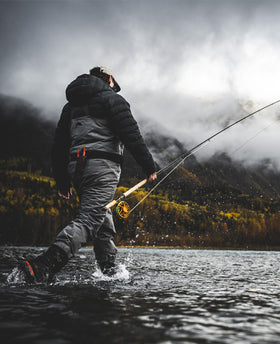
5 Ways to Pack More Efficiently for Alpine Fishing This Summer
With warmer weather rolling in and the mountains beginning to shed their snow, I’m sure many of you are as excited as I am to hike up into the alpine. Some of you may be heading into your first or second season of exploring this unique style of fishing and might be looking for ways to lighten your load, so the day is more about enjoying the solitude of nature and less about the hike in. Over the years, I’ve made numerous changes to my backcountry system—some completely unnecessary and short-lived, while others have been game changers. I thought I’d hop on here and share a few of my best tips to help lighten your pack and make your alpine adventures a little easier as we all wait for the high country to thaw.
1. Put Two Rods in One Tube
Most alpine anglers like to bring two rods on their ventures, whether it's an overnight trip or just a day hike. The last thing anyone wants is to break a rod and be forced to stop fishing or to jerry-rig it back together. I often bring a 9ft 6wt and a 9ft 5wt. However, attaching each individual rod tube to either side of my pack hinders my ability to carry other essential items, like a net and a water bottle. I’ve solved this by placing each rod in its own sock, rolling them up, and positioning the butt ends opposite each other when putting them in the same tube.

2. Invest in a Leaf Box
Fishermen often love having a multitude of boxes and patterns neatly organized and ready for the day’s conditions. Alpine fishing, however, is quite predictable about 80% of the time. The other 20%, you might end up cycling through every fly you own. Still, it's more black-and-white than river fishing. Having a box dedicated to the full life cycle of a caddis won’t make a huge difference, and bringing too many boxes takes up valuable pack space. I’ve opted for a leaf box, which holds a ton of flies while still providing some organization. Mine is the Fulling Mill Tactical Max Box, which holds up to 960 flies. With it, I can carry enough chironomids, leeches, scuds, and eggs for the entire season, only needing the occasional refill of my most-used patterns. In addition, I carry a dry-fly-dedicated box, limiting patterns so I don’t need to pack two large boxes.

3. Be Realistic About Tippet
When fishing rivers, lowland lakes, or warm water, I usually carry the same gear—ranging from 60lb bite tippet for pike and musky all the way down to 6x tippet for finicky trout. While being over prepared can be comforting, carrying that much variety takes up too much space in the alpine. Realistically, you only need six spools: 2x, 3x, and 4x fluorocarbon, and 3x, 4x, and 5x nylon (monofilament). If you think you’ll need 1x or 6x, bring them as tapered leaders instead—they’re lighter and easier to pack.

4. Refine Your Water System
Dehydration is a major concern in the backcountry, especially on overnight trips. Most alpine anglers bring two Nalgene-style water bottles on day trips. I used to do the same until I found a better system. Now I carry just one bottle, freeing up a pack pocket for rod tube storage. I personally use the Grayl GeoPress, a press-style filter that looks like a regular bottle. Sawyer also makes a version that attaches to the top of a Smartwater bottle. Either system lightens your load and allows unlimited water access. I usually fill up with tap water at home and rely on filtering after that. For peace of mind, you can map out potential water sources, but here in Colorado, I’ve found they’re common enough that I don’t worry too much.

5. Find the Most Optimal Net
Trout are delicate, and alpine lakes often hold native cutthroat that deserve careful handling so they can be caught another day. A net with a rubber basket is best for keeping fish in the water while you unhook and handle them. In lowland fisheries, I use the Fishpond El Jefe, which is great, but in alpine terrain, it’s bulky and tends to get caught on branches while you hike. While small hand nets are easier to carry, they often lack the reach and basket size to land fish over 20 inches. I’ve found a good middle ground with nets like the Tried & Trout Gunnie Fin 17” or the Fishpond Canyon Net. Both offer more reach and a larger basket than typical hand nets, without the bulk of boat nets. I also recommend sliding a buff over the basket when hiking through dense brush to help prevent snags on branches.

I hope these five tips that I have gathered over my years of venturing into the high country have helped some of you feel more prepared for a great season in the alpine. It is always important to remember that while your day may be fishing focused, preparation for the non-fishing aspects of high country fishing is very important since it can be unforgiving if you are caught in the wrong place at the wrong time. If you are curious about information on the fishing side of the alpine, scroll back on our blog page to June 2024 to the blog titled “Tackling Alpine Lake Fishing this Summer” where I go over the whole nine yards.





Leave a comment